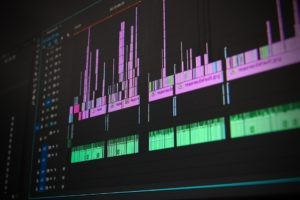Converting audio files such as Mp3 to text can be a useful and time-saving tool for many tasks. In Python, there are several libraries available that allow you to convert an audio file from Mp3 format into plain text. This process involves using speech recognition and natural language processing (NLP) algorithms to identify the words and phrases in the audio file and convert them into text.
In this article, we will discuss how to convert Mp3 files to text using Python. We will also look at the various libraries available that can help us in this task.
What is Mp3 to Text Conversion?
Mp3 to Text conversion is the process of taking an audio file (in Mp3 format) and converting it into text using speech recognition and NLP techniques. Converting mp3 to text allows you to easily read the contents of the audio file, as well as store it in an easily searchable form.
Why Would You Want to Convert Mp3 to Text?
Converting audio files from Mp3 to text can be extremely useful for a variety of tasks. Most important, it gives people with hearing impairments the opportunity to access content that would otherwise be difficult or impossible for them to understand. Additionally, if you have an audio recording of a meeting or lecture, you can easily convert it into text and store it as a searchable document.
This makes it much easier to access the content in the future, as well as makes it easier for other people to read and understand. Additionally, Mp3 to Text conversion can be useful if you want to create a speech-to-text application. Moreover, converting mp3 to text creates text that could be useful for marketing purposes such as blog posts articles or content for an advertisement.
How to Convert Mp3 to Text with Python?
Essentially, speech is just a sound wave. To be more specific, it has characteristics like amplitude, peak and trough values, wavelength, cycle, and frequency that make up the audio signal.
Because audio signals are continuous, they contain an infinite number of data points. To convert an analog audio signal to a digital signal that can be processed by a computer, the network uses a discrete distribution of samples that closely resembles the continuity of an audio signal.
After we determine a reasonable sample frequency (a good starting point is 8000 Hz, considering most speech frequencies are within this range), we can analyze the audio signals using Python packages like SQLite and PySide/PyQt. With these inputs, we can then separate the data set into two parts: one for training the model and another for validating the results.
The Conv1d model architecture, a convolutional neural network with a single dimension of operation, can be used at this stage. After that, we can construct a model and establish its loss function using neural networks in order to convert voiced text (speech) to written text.
To enable wider acceptance and applicability, we can convert statements into text using deep learning and NLP (Natural Language Processing).
Install a Library That Supports Speech Recognition
The first step is to install a library that supports speech recognition, such as CMU Sphinx or Google Speech Recognition. Once you have installed this library, you can use it to convert the Mp3 file into text. You can do this by using the following code:
import speech_recognition as sr
r = sr.Recognizer()
audio_file = sr.AudioFile('example.mp3')
with audio_file as source:
audio = r.record(source)
text = r.recognize_google(audio)
print(text)
This code will recognize and print out the text from the Mp3 file. Once you have successfully converted the Mp3 file to text, you can then use natural language processing (NLP) algorithms to analyze it and extract valuable insights.
Popular Python Libraries
NLTK, TextBlob, and SpaCy are some of the popular Python libraries that you can use for natural language processing tasks. NLTK provides functions to tokenize words and sentences, as well as stem and lemmatize them. TextBlob is an easy-to-use library that provides functions to break down the text into its component parts of speech and identify the sentiment associated with each word. SpaCy is an advanced NLP library that offers functions for deep learning, entity recognition, and more.
Once you have analyzed the text from the Mp3 file using these libraries, you can use the insights to create powerful applications, such as a chatbot, voice recognition system, or automated customer service system. Transcribing audio using python is an effective way to speed up many processes and add value to your projects.
Are There More Options for Converting Mp3 to Text?
Yes, there are several alternative methods for converting Mp3 files to text. You can use automated transcription services based on ai and machine learning or you can use a professional service human transcription service which is more time-consuming and expensive that the first option mentioned.
Conclusion
In conclusion, converting Mp3 files to text can be a great way to store audio content and make it easily accessible. By using Python libraries such as CMU Sphinx or Google Speech Recognition, you can quickly turn an audio file into text. Additionally, there are various other options for transcribing Mp3 files such as automated transcription services or professional human transcription. No matter the method you choose, converting Mp3 to text can be a great way to unlock valuable insights and create powerful applications.

